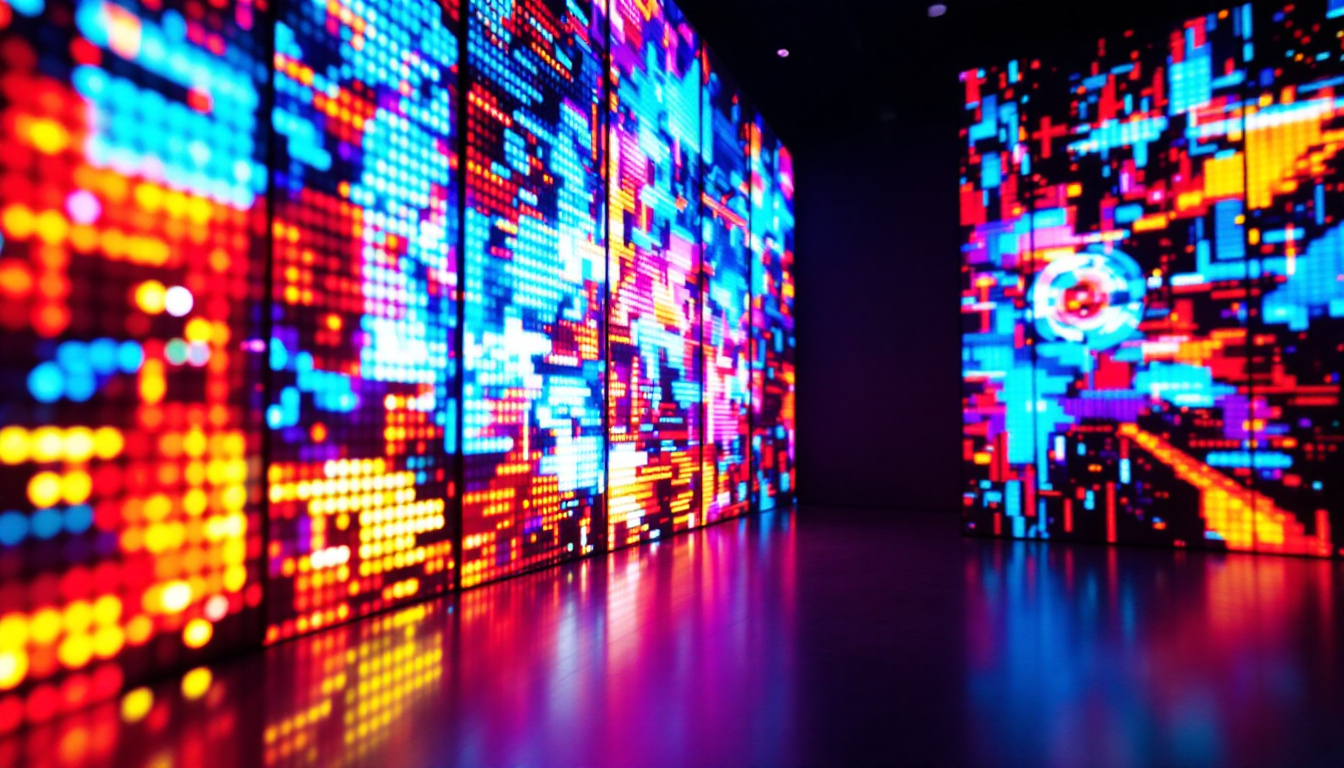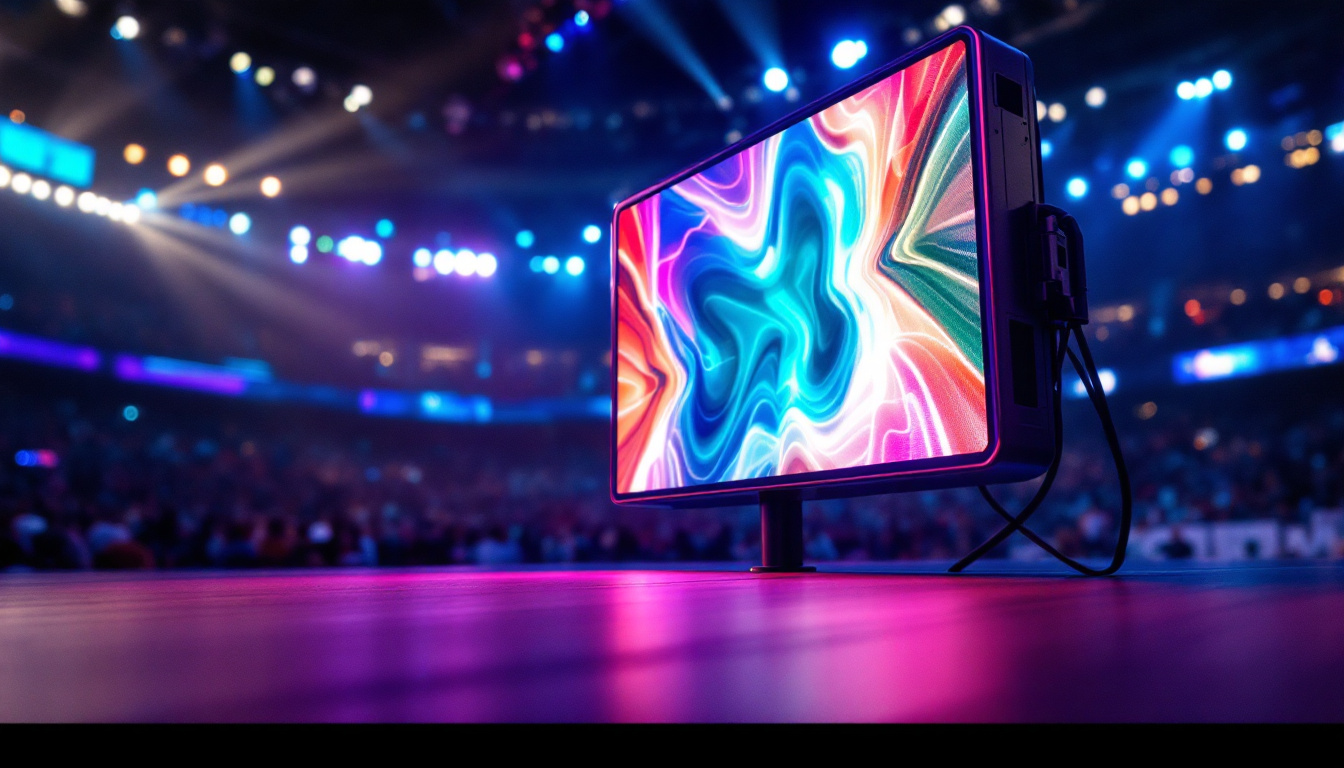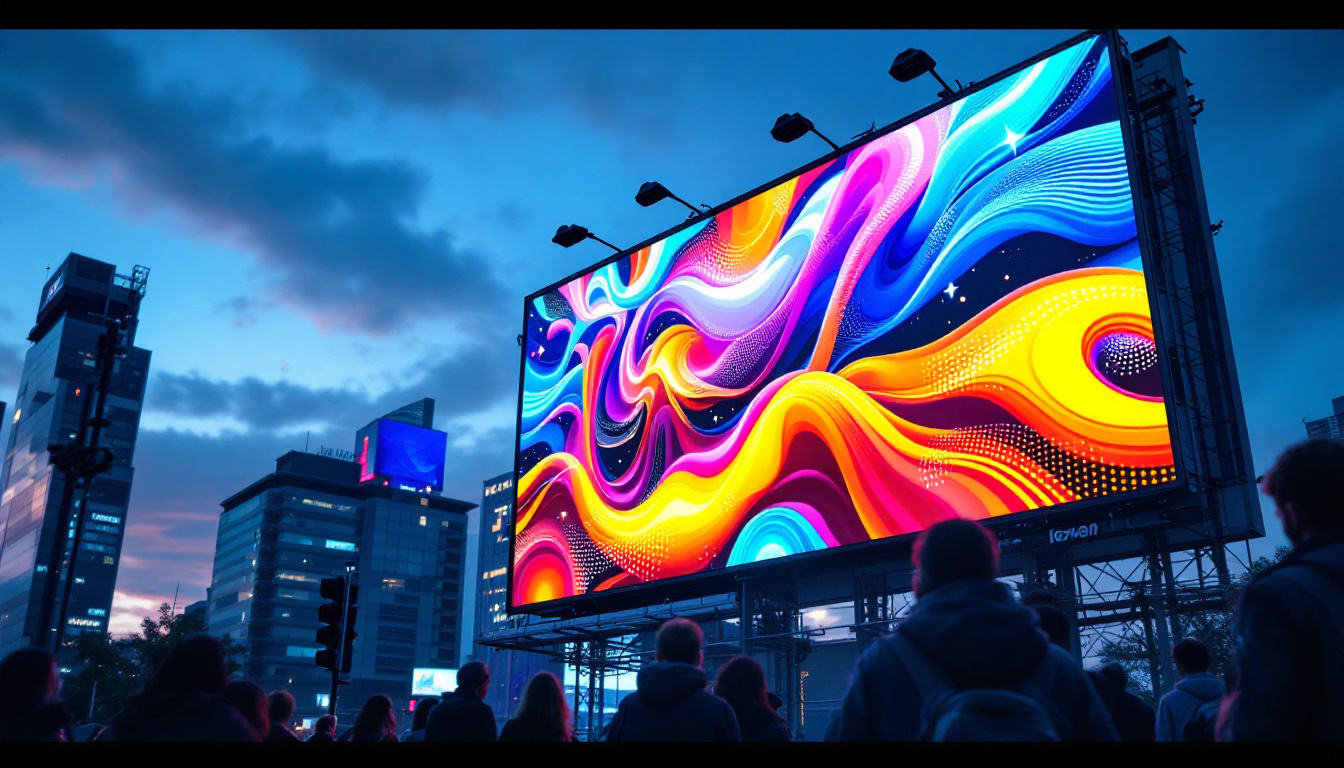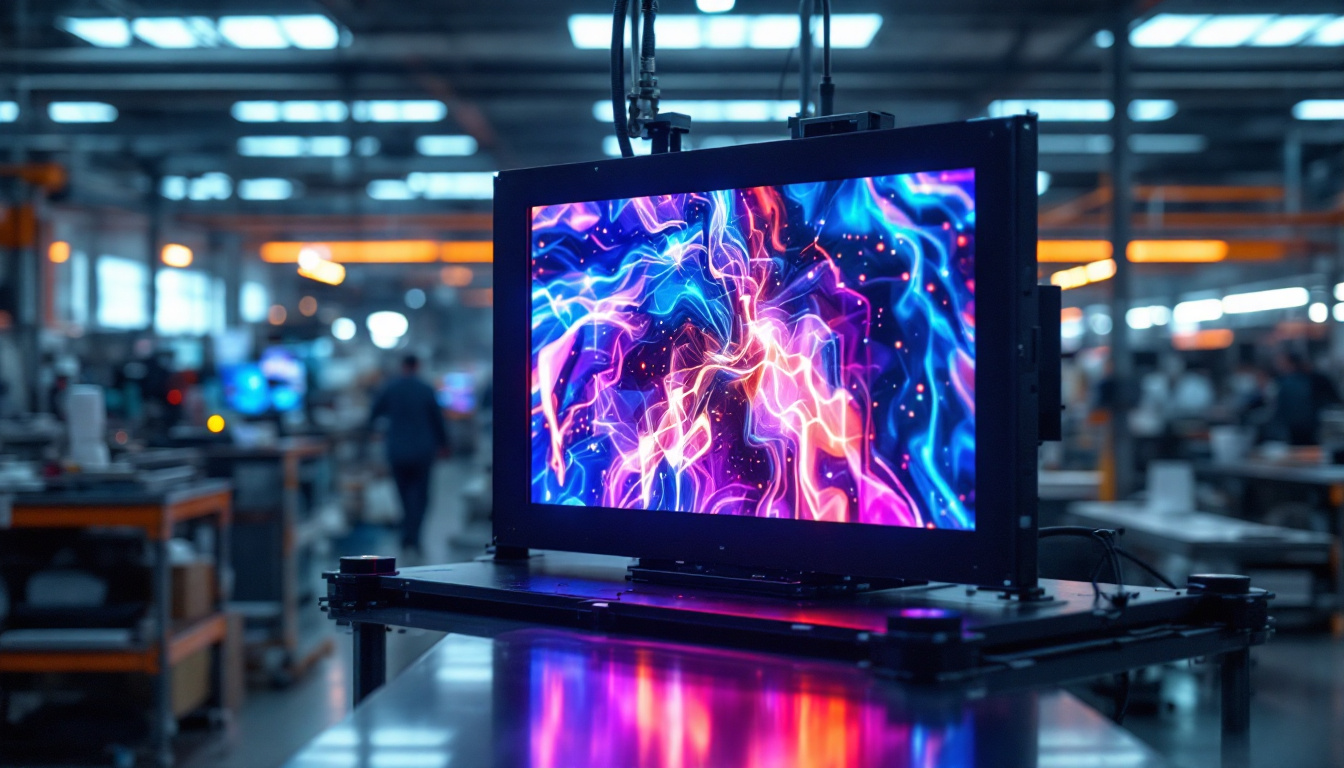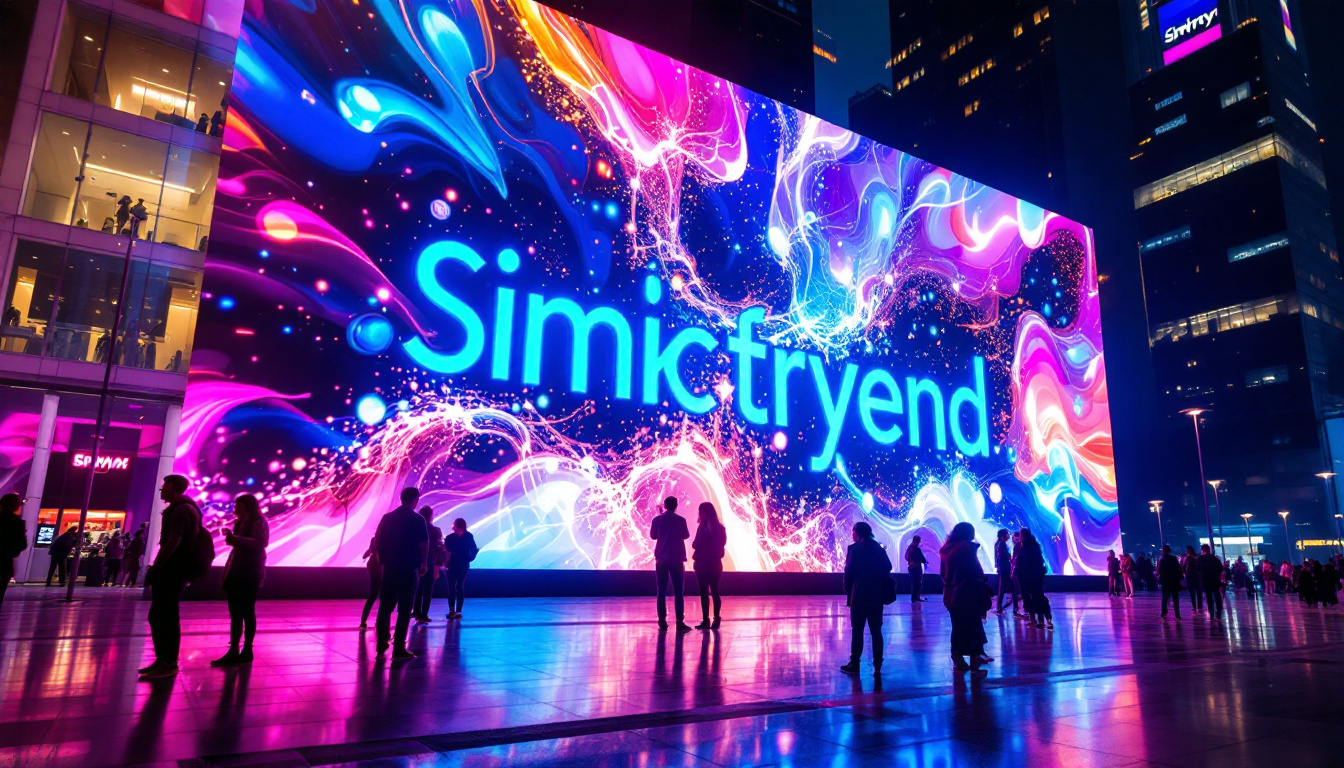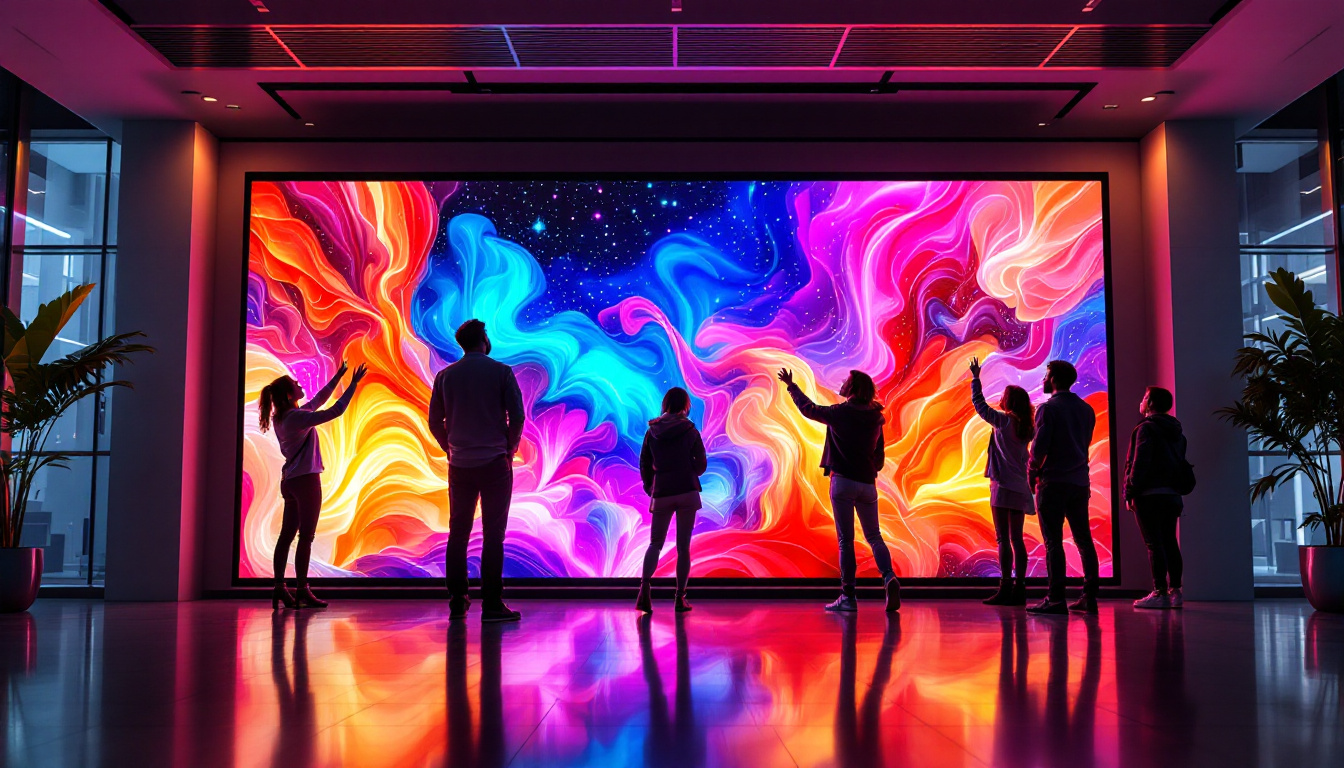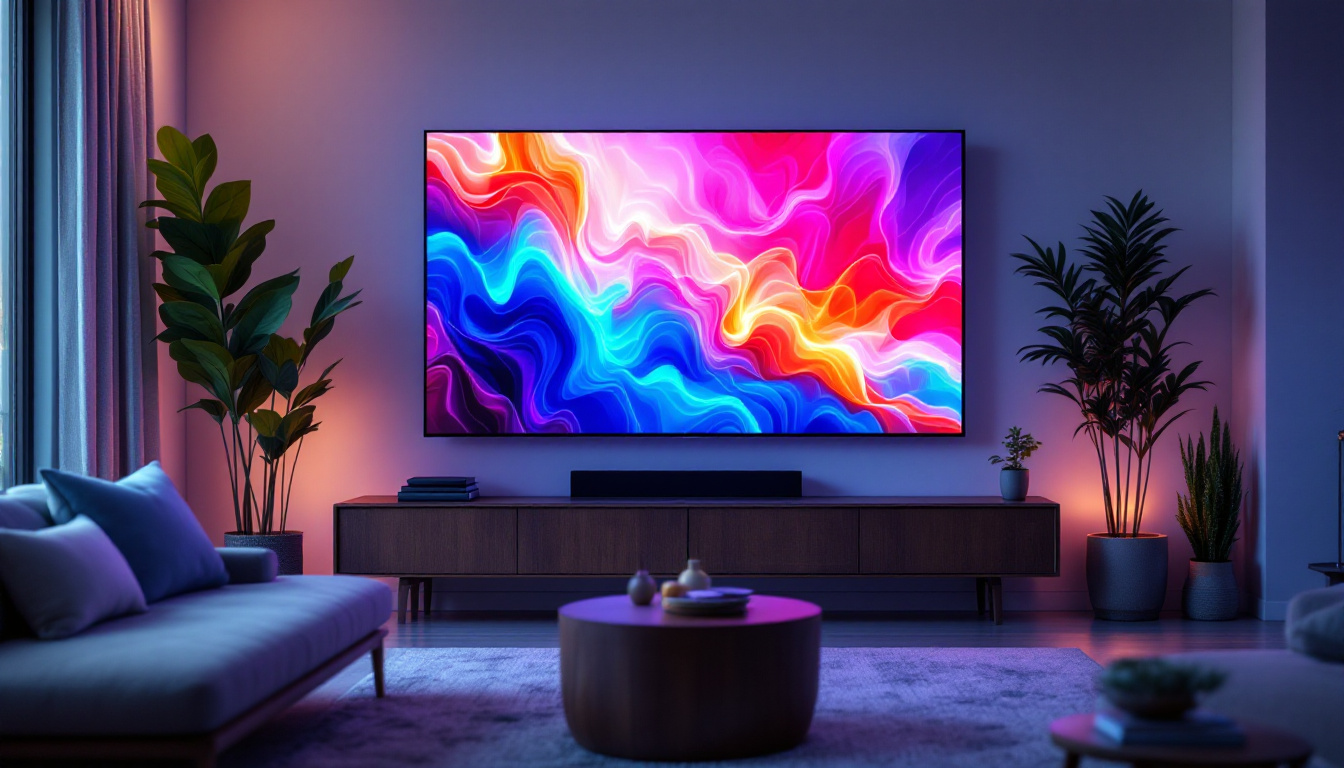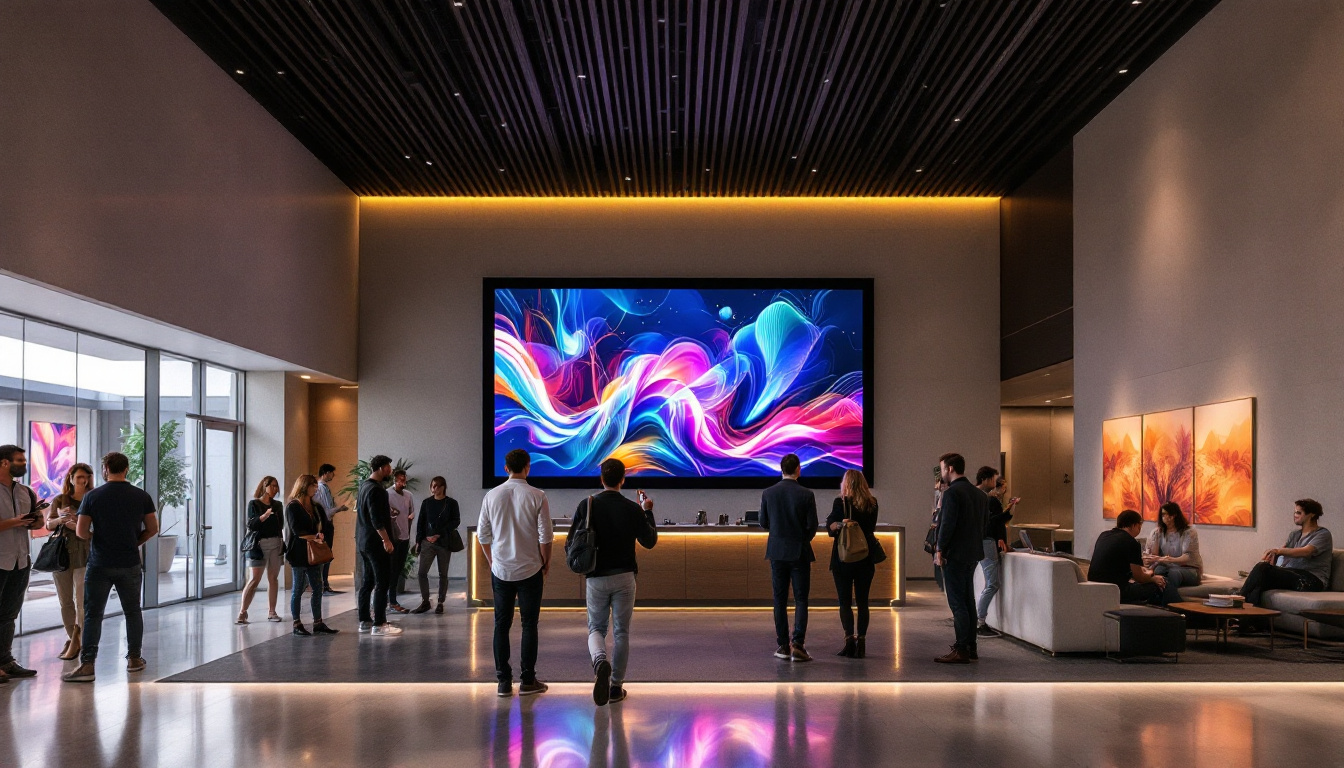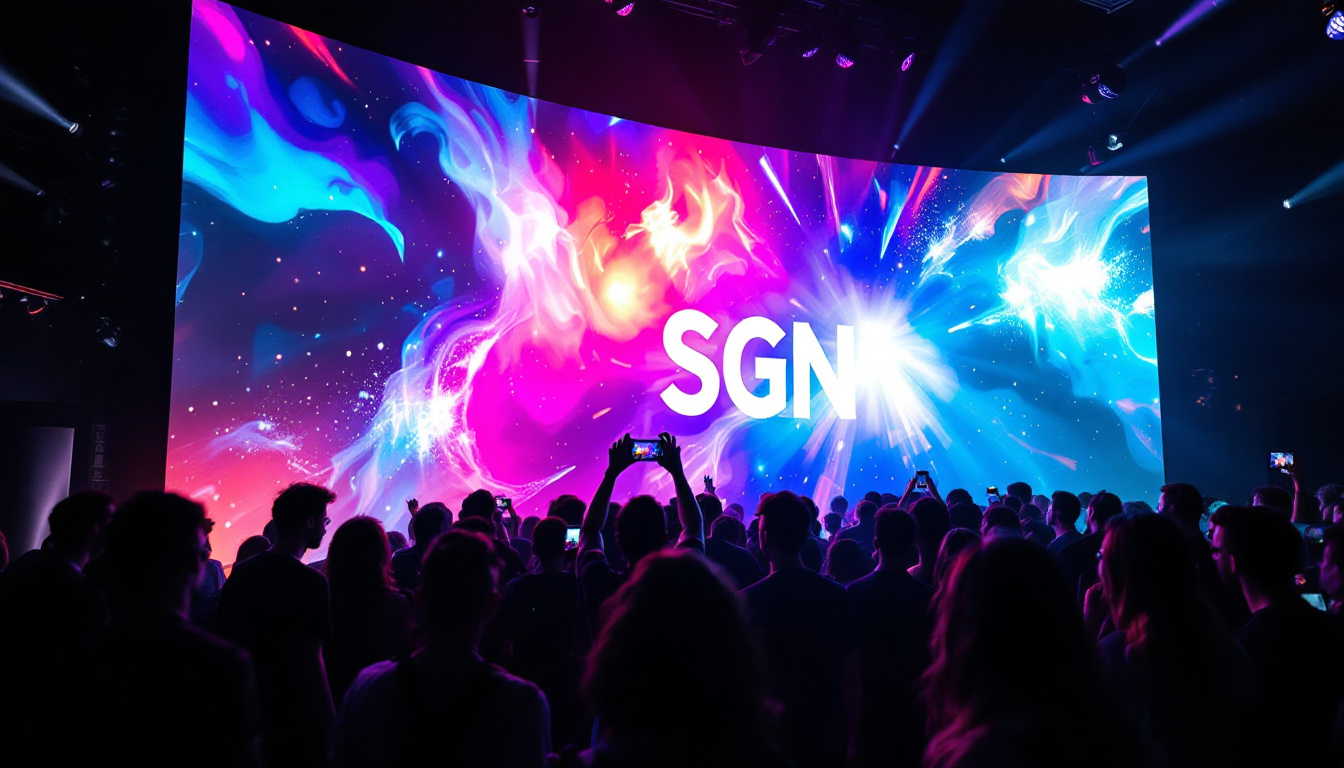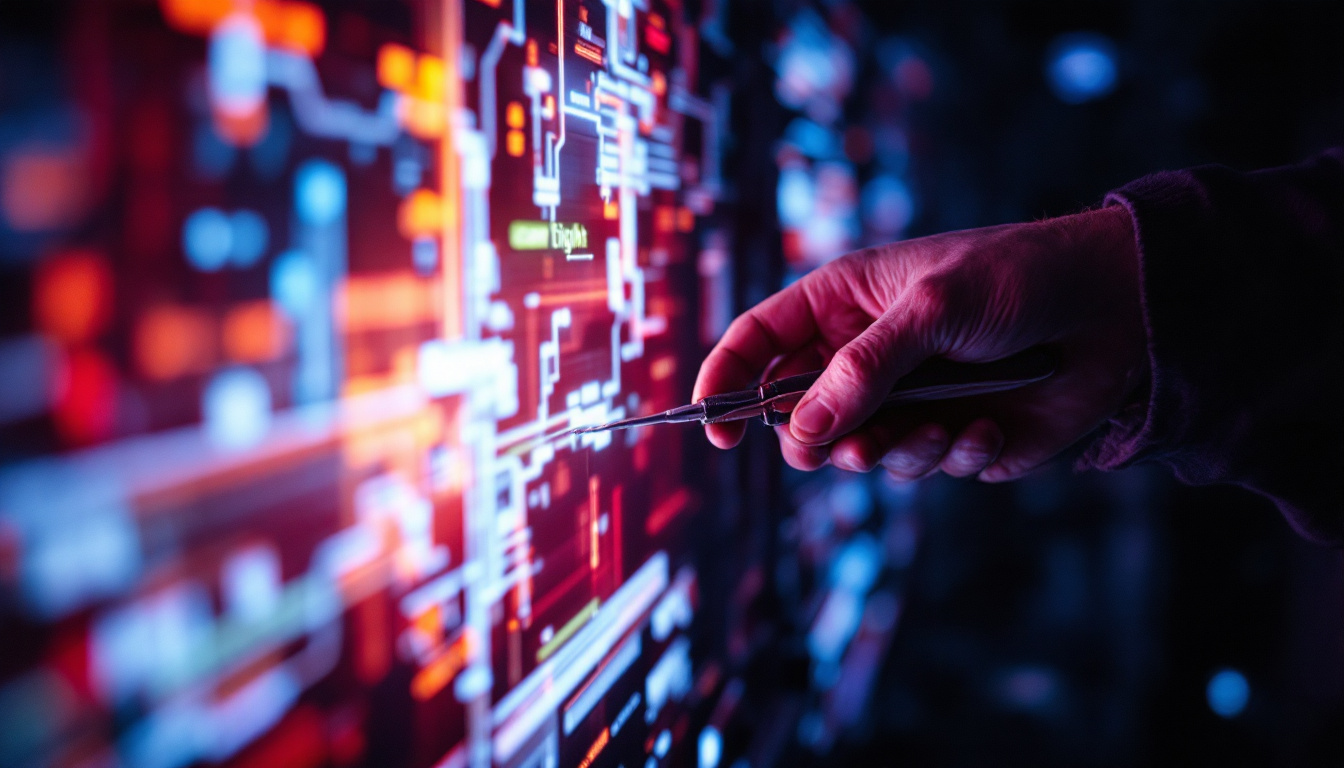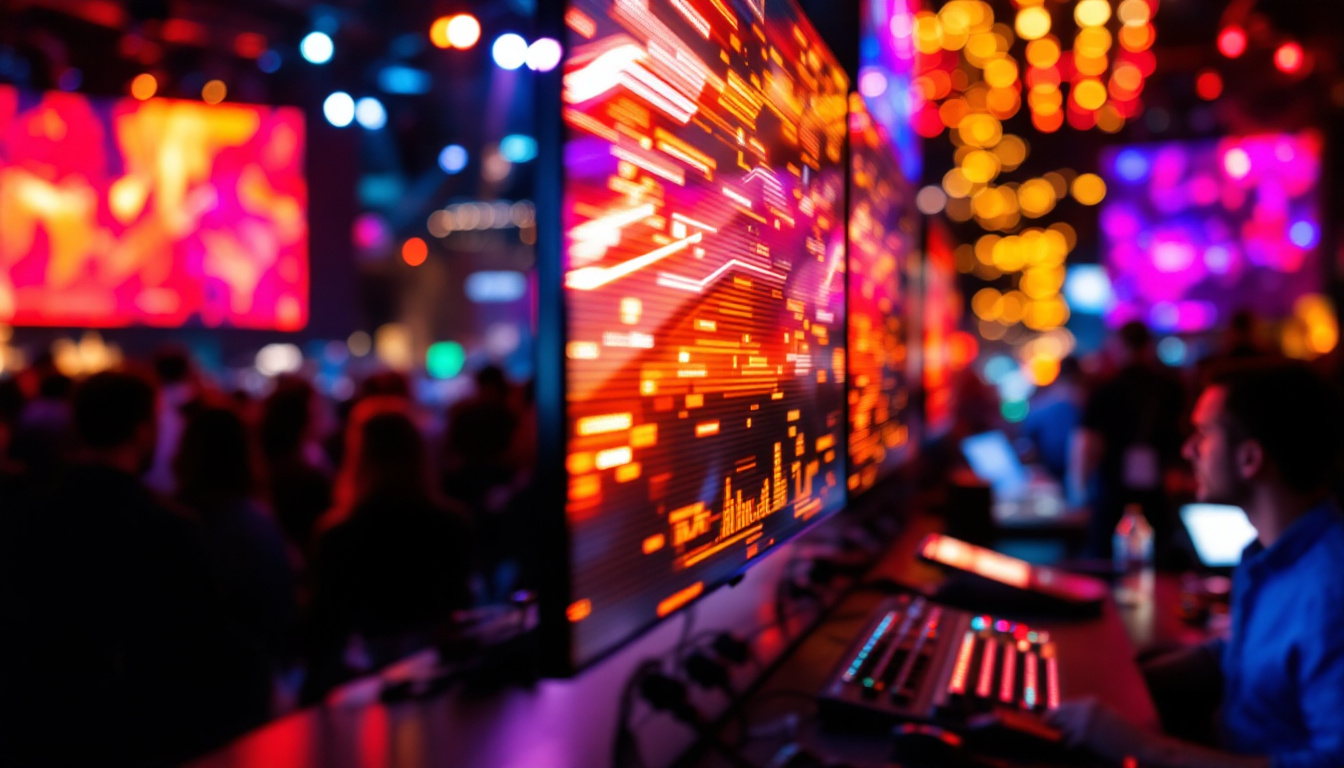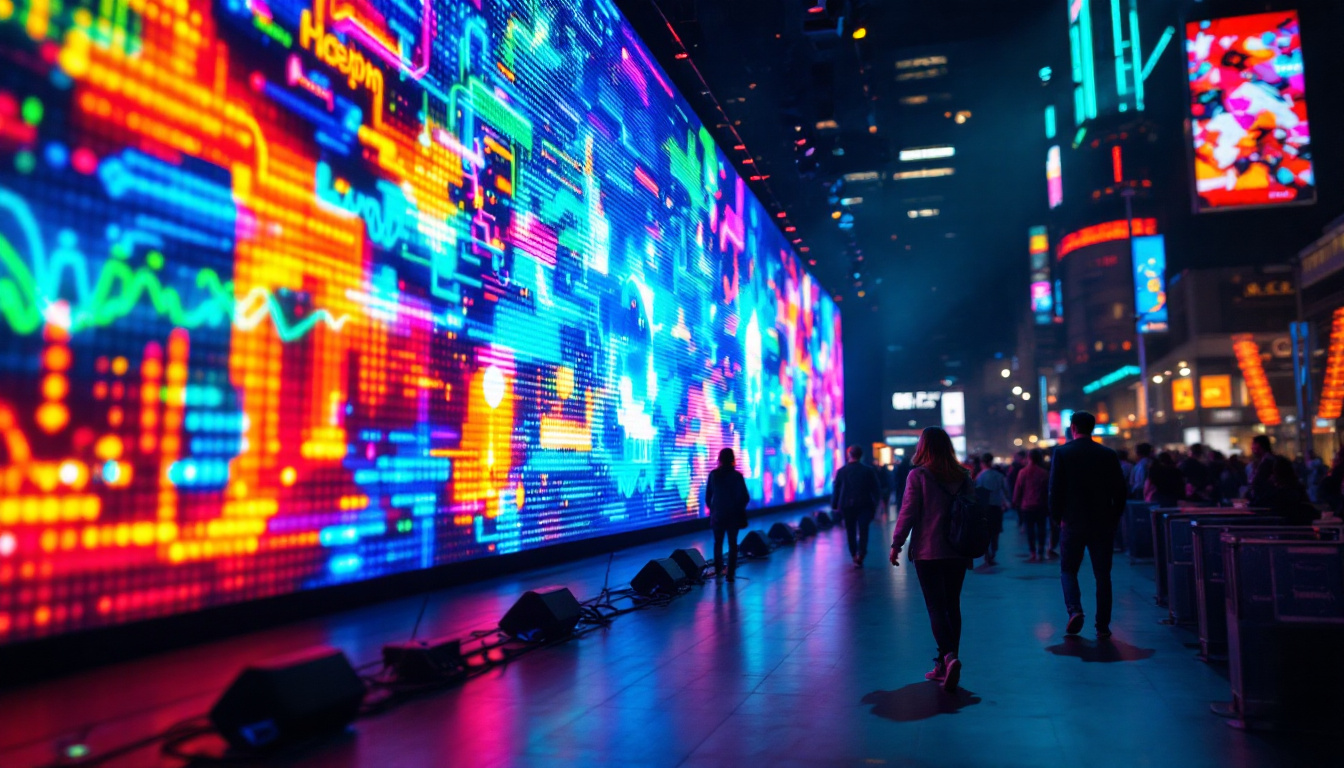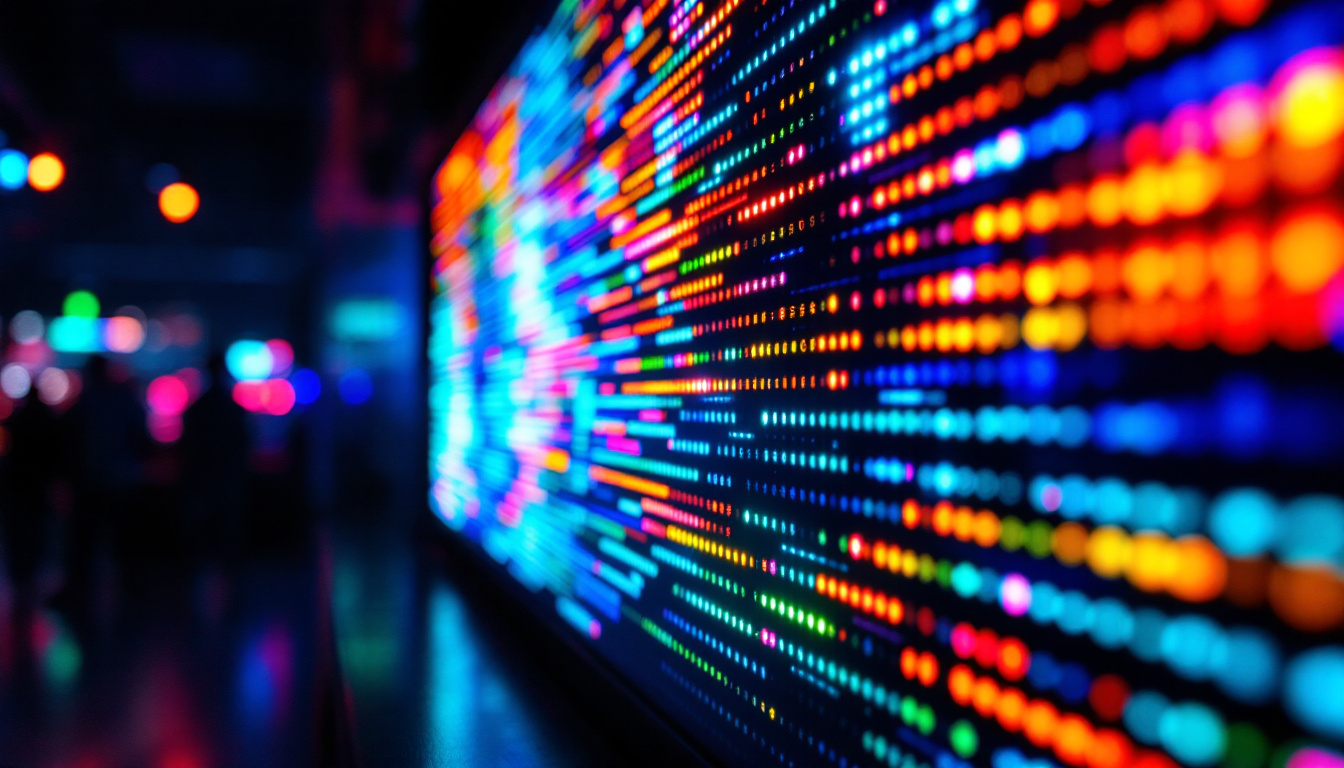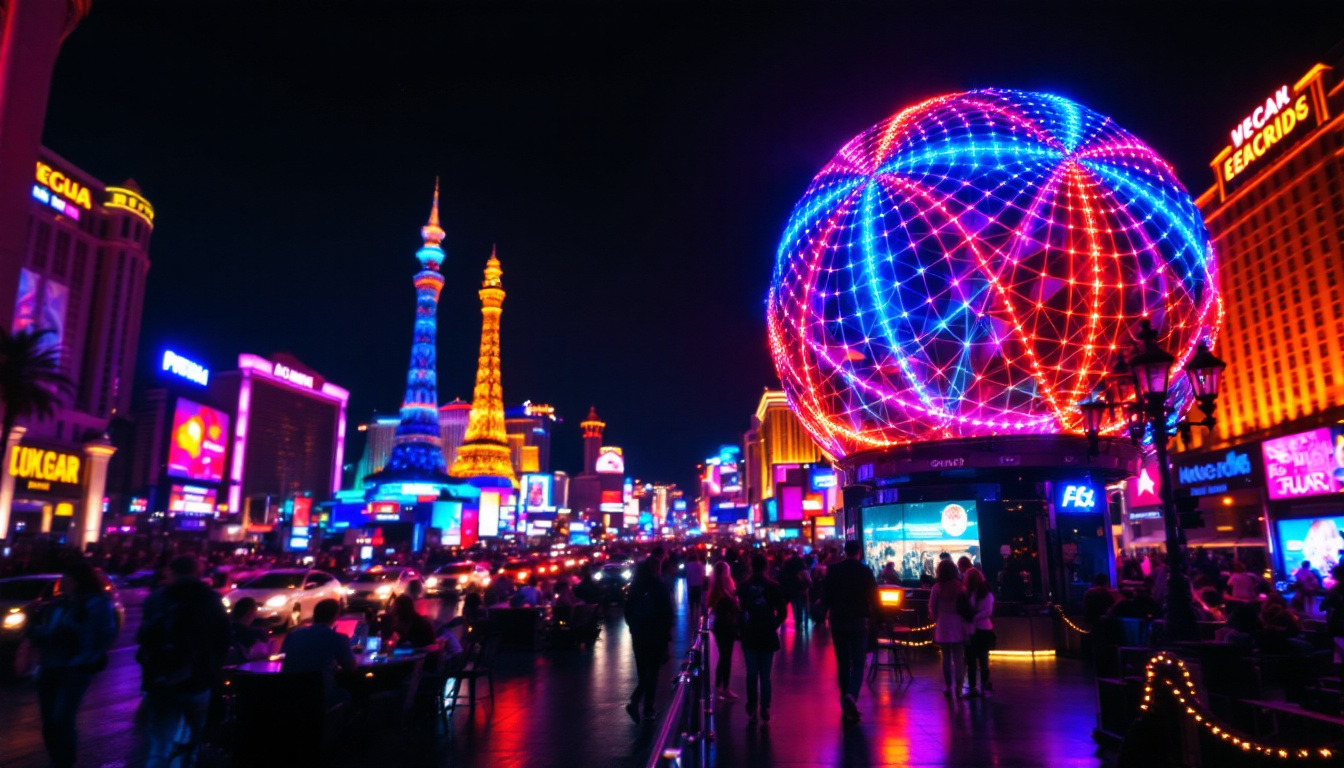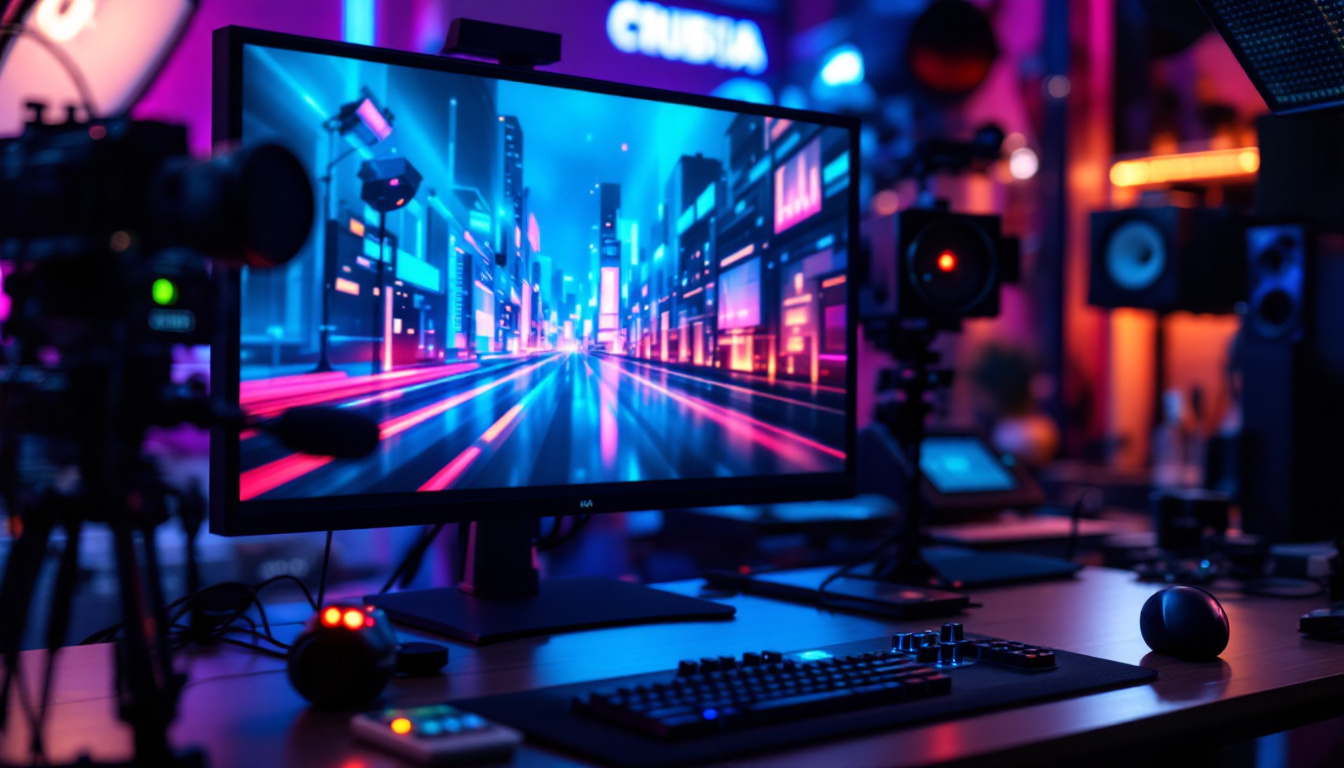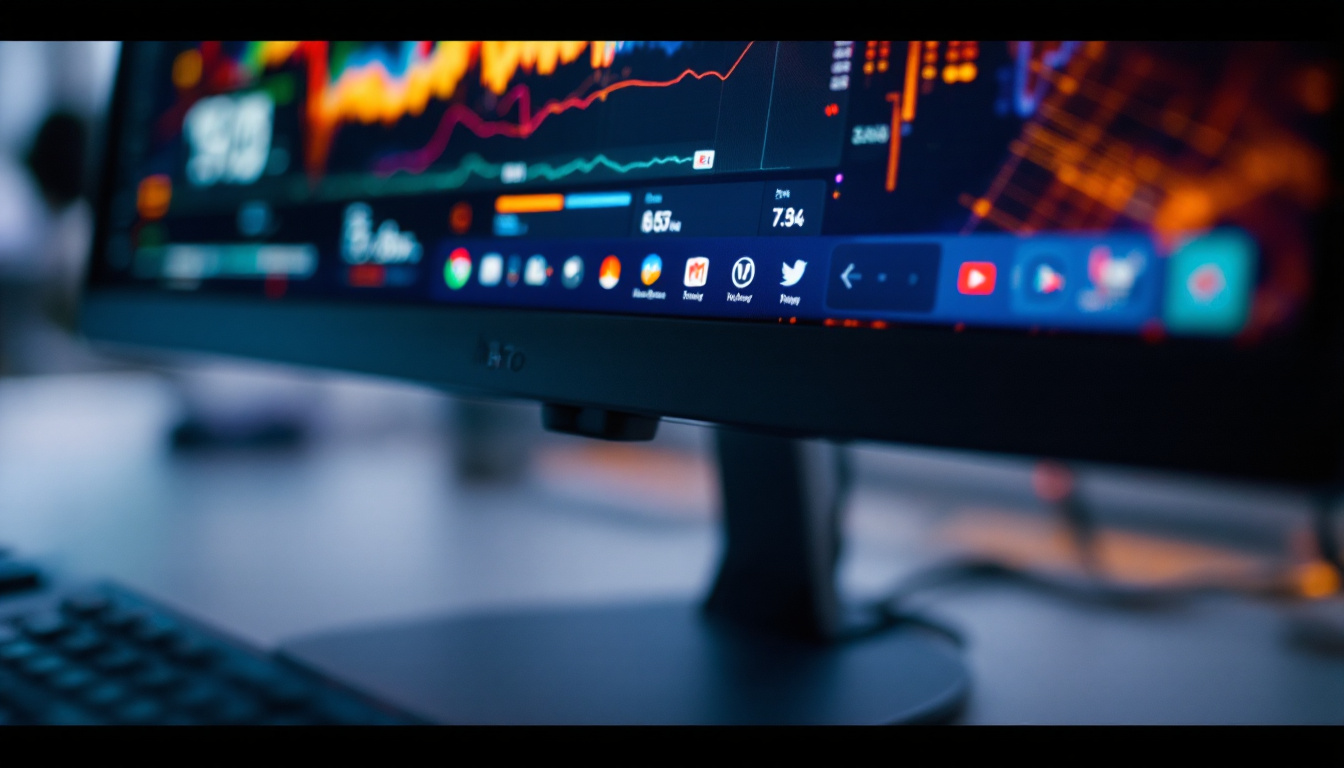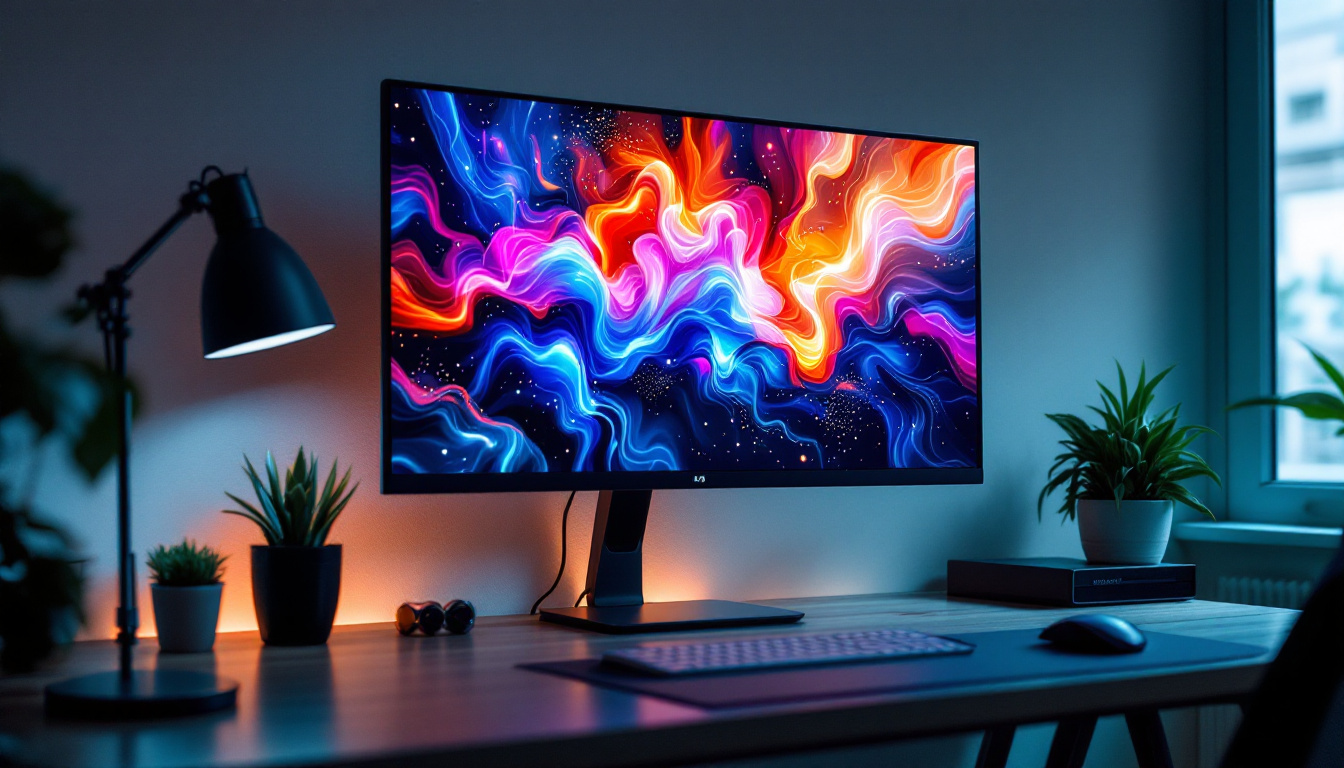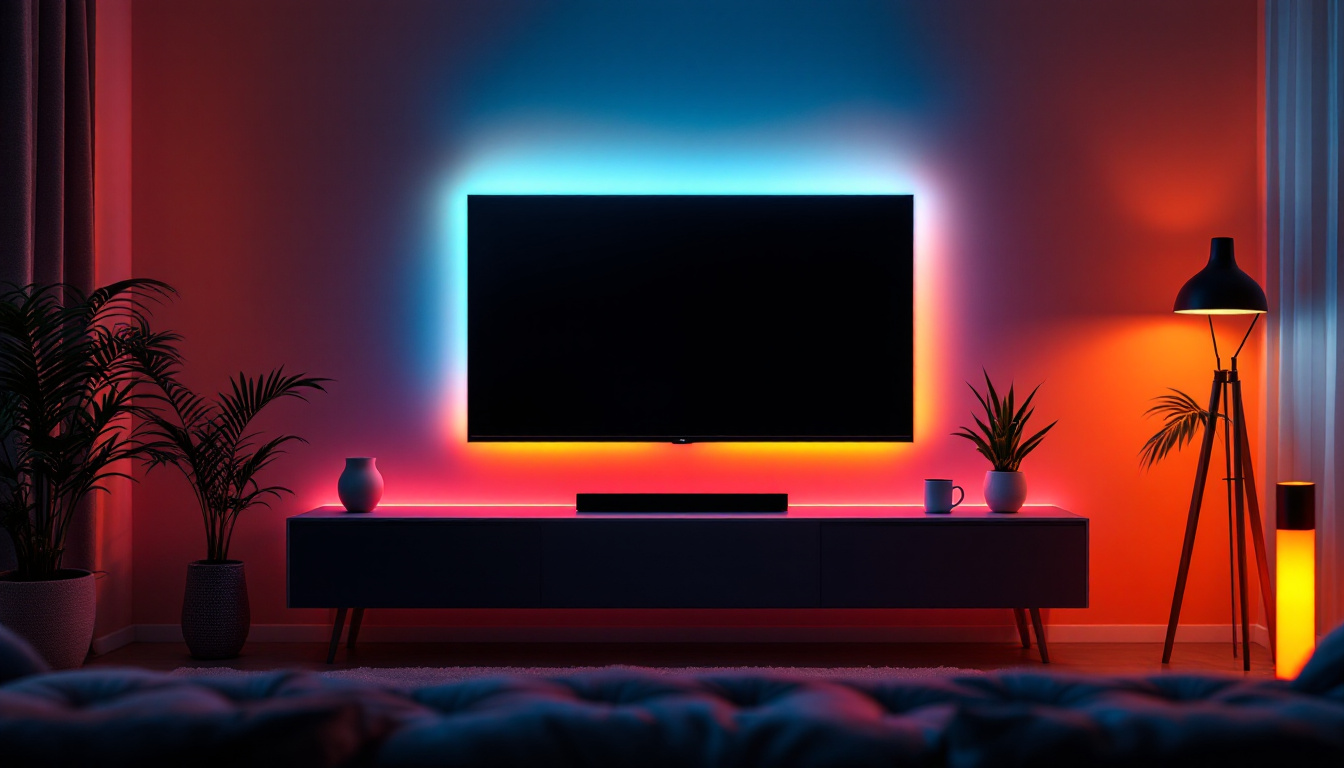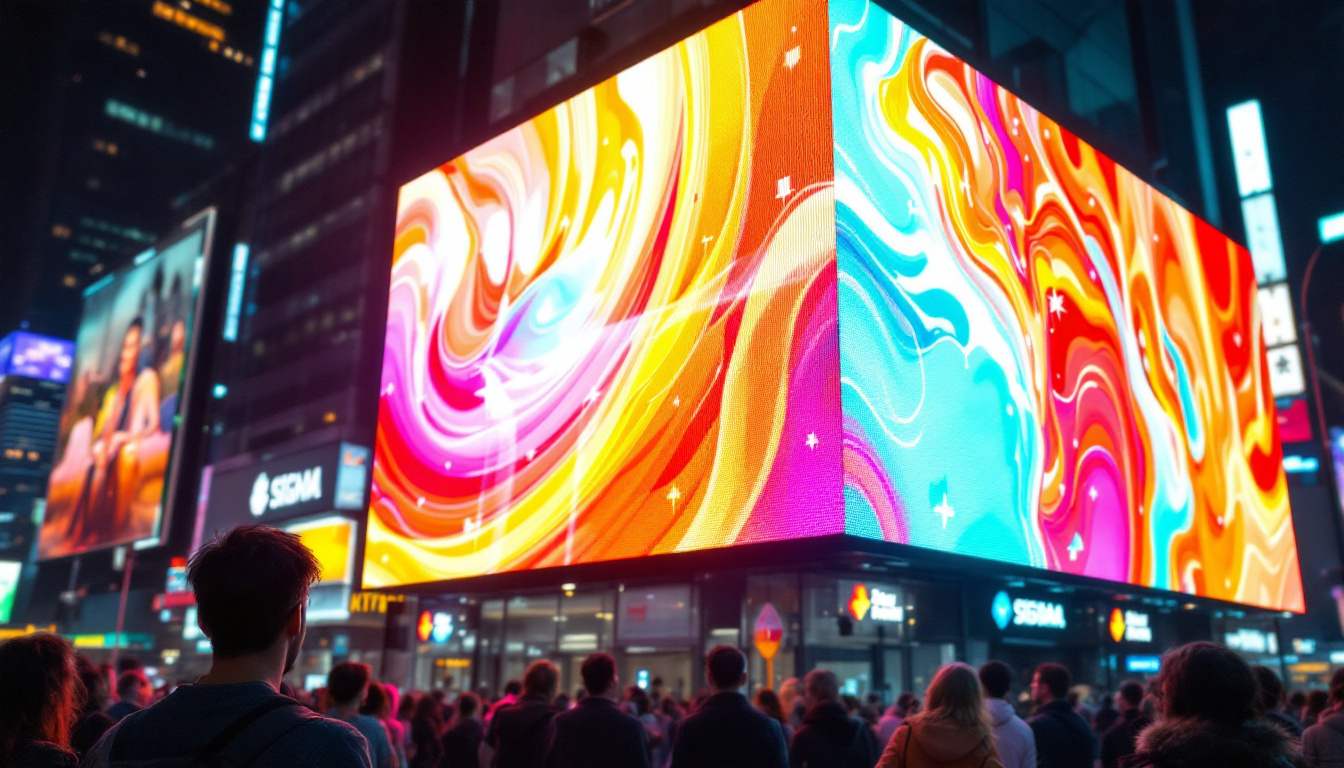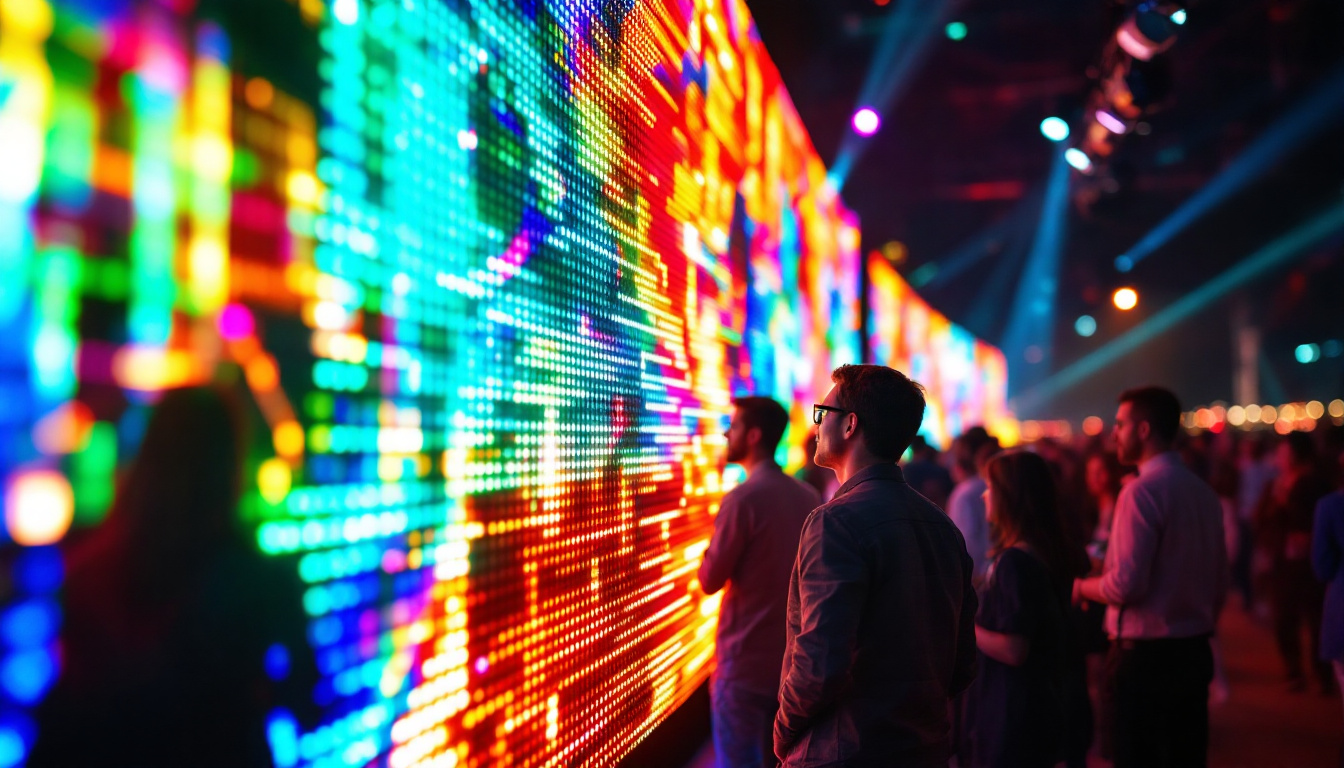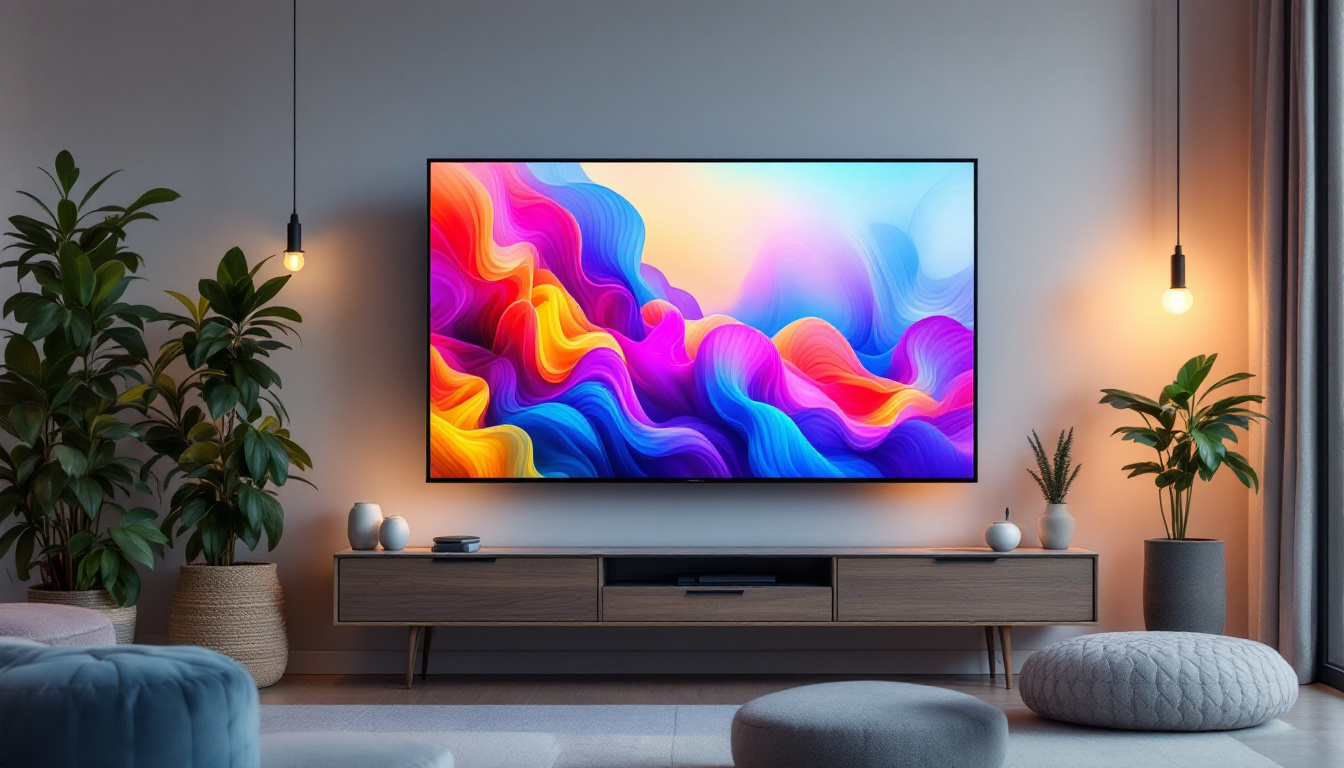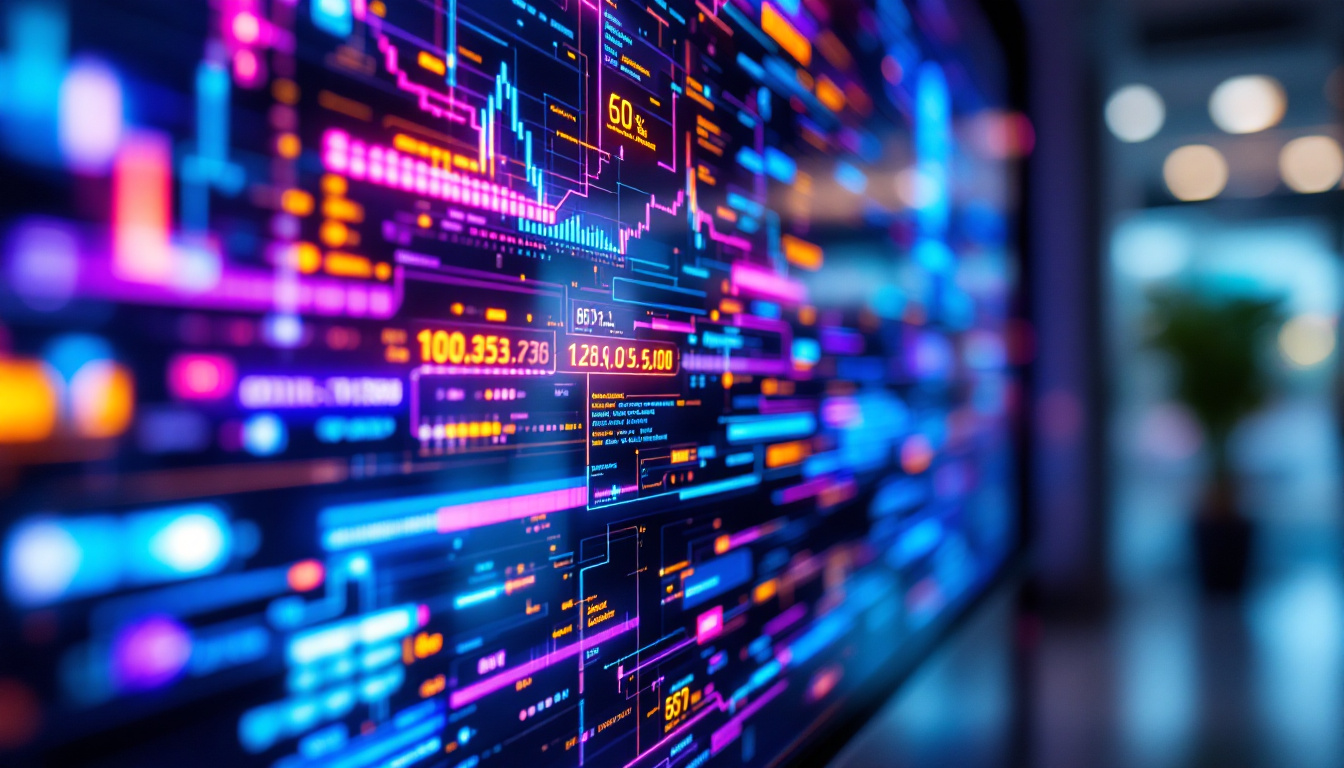In an era where technology and creativity converge, digital art has emerged as a revolutionary medium, transforming the way artists express themselves and engage with audiences. Central to this transformation is the LED display, a versatile tool that has redefined the landscape of digital art. This article delves into the intricacies of LED displays, exploring their significance, functionality, and the myriad ways they enhance the digital art space.
Understanding LED Technology
LED, or Light Emitting Diode, technology has become a cornerstone in various applications, from everyday lighting to intricate digital displays. At its core, an LED is a semiconductor device that emits light when an electric current passes through it. This simple yet powerful principle has led to the development of vibrant displays that can showcase a wide range of colors and images. The efficiency of LEDs also contributes to their popularity; they consume significantly less energy compared to traditional incandescent bulbs, making them an environmentally friendly option.
The Basics of LED Displays
LED displays consist of numerous small diodes arranged in a grid format. Each diode can emit light in different colors, allowing for the creation of detailed images and animations. The resolution of an LED display is determined by the pixel pitch, which refers to the distance between the centers of two adjacent pixels. A smaller pixel pitch results in higher resolution and sharper images, making it ideal for applications where detail is paramount. Moreover, advancements in technology have led to the development of high dynamic range (HDR) LED displays, which offer enhanced contrast and color accuracy, further enriching the viewing experience.
In digital art, the ability to manipulate light and color dynamically opens up a realm of possibilities. Artists can create immersive experiences that captivate audiences, transforming static images into moving pieces of art that engage viewers on multiple sensory levels. This dynamic capability is particularly beneficial in interactive installations, where audience participation can influence the visual output, creating a dialogue between the artwork and its viewers. Such interactivity not only enhances engagement but also allows for a unique experience with each viewing, as the art evolves in real-time based on user input.
Types of LED Displays
There are several types of LED displays, each suited for different applications within the digital art space. The most common types include:
- Direct View LED Displays: These displays are made up of individual LED modules that can be assembled into larger screens. They are often used for outdoor advertising and large-scale art installations, offering high brightness and visibility even in direct sunlight.
- LED Video Walls: Comprising multiple LED panels, video walls can create a seamless display for presentations, exhibitions, or immersive art experiences. Their modular design allows for flexibility in size and shape, catering to the specific needs of each event or installation.
- Flexible LED Displays: These are lightweight and can be bent or shaped to fit unique artistic designs, allowing for innovative installations that challenge traditional display formats. Artists can use flexible LEDs to create stunning three-dimensional structures or wraparound displays that envelop viewers in a captivating visual narrative.
Additionally, advancements in LED technology have led to the emergence of transparent LED displays, which allow for the integration of digital content into windows or glass surfaces without obstructing visibility. This innovation is particularly appealing for retail environments, where brands can showcase dynamic advertisements while still allowing customers to see the products inside. The versatility of LED technology continues to inspire new creative applications, pushing the boundaries of what is possible in both art and advertising.
The Role of LED Displays in Digital Art
LED displays have revolutionized the way artists create and present their work. They offer unprecedented flexibility and interactivity, enabling artists to experiment with new forms and techniques.
Interactivity and Engagement
One of the most significant advantages of LED displays in the digital art space is their ability to facilitate interactivity. Artists can design installations that respond to audience movements or inputs, creating a dialogue between the artwork and the viewer. This level of engagement transforms passive observation into an active experience, allowing audiences to become co-creators in the artistic process.
For instance, installations that use motion sensors can alter visuals based on the proximity of viewers, leading to a personalized experience that resonates with individuals. This interactivity not only enhances the viewer’s connection to the art but also challenges traditional notions of authorship and artistic intent.
Dynamic Content Creation
LED displays allow for the continuous evolution of artwork. Artists can update their pieces in real-time, adding new layers of meaning or responding to current events. This fluidity contrasts sharply with traditional art forms, where a piece is often static once completed.
Moreover, the integration of software tools enables artists to create animations, video art, and generative designs that can be displayed on LED screens. This capability expands the boundaries of creativity, allowing for a fusion of visual art, technology, and storytelling.
Applications of LED Displays in the Art World
The versatility of LED displays has led to their adoption across various sectors within the art world. From galleries to public installations, their applications are diverse and impactful.
Art Galleries and Exhibitions
Many contemporary art galleries have embraced LED displays as a means to showcase digital art. These displays can be used to present video art, digital installations, and interactive pieces, providing a platform for artists to explore new dimensions of creativity.
Exhibitions featuring LED displays often attract larger audiences, as the dynamic nature of the artwork draws in passersby. This increased visibility can be crucial for emerging artists looking to establish their presence in a competitive art market.
Public Installations and Urban Art
LED displays have also found a home in public art installations. Cities around the world are incorporating large-scale LED screens into their urban landscapes, creating vibrant displays that engage communities and enhance public spaces.
These installations can serve various purposes, from promoting local artists to conveying social messages. For example, LED displays can be used to showcase community-driven art projects or highlight important cultural events, fostering a sense of connection among residents.
Challenges and Considerations
While LED displays offer numerous advantages, there are also challenges and considerations that artists and curators must address when incorporating them into their work.
Technical Limitations
Despite their many benefits, LED displays come with technical limitations. Issues such as color accuracy, brightness levels, and viewing angles can impact the overall quality of the artwork. Artists must carefully consider these factors when designing their pieces to ensure that the final presentation aligns with their creative vision.
Additionally, the cost of high-quality LED displays can be prohibitive for some artists, particularly those working on a smaller scale. As technology continues to evolve, however, more affordable options are becoming available, making it easier for artists to experiment with this medium.
Environmental Impact
The environmental impact of LED displays is another important consideration. While LED technology is generally more energy-efficient than traditional lighting, the production and disposal of electronic components can contribute to electronic waste. Artists and organizations must be mindful of these issues and seek sustainable solutions when implementing LED displays in their work.
The Future of LED Displays in Digital Art
The future of LED displays in the digital art space looks promising, with ongoing advancements in technology opening up new possibilities for artists and audiences alike.
Innovative Technologies
Emerging technologies, such as augmented reality (AR) and virtual reality (VR), are beginning to intersect with LED displays, creating immersive experiences that blur the lines between the physical and digital realms. Artists are exploring how to integrate these technologies into their work, leading to groundbreaking installations that challenge traditional perceptions of art.
Furthermore, advancements in display technology, such as microLED and organic light-emitting diode (OLED) displays, are set to enhance color accuracy, resolution, and overall performance. These innovations may soon provide artists with even more tools to express their creativity and engage audiences.
Community and Collaboration
The rise of digital art and LED displays has fostered a sense of community among artists, technologists, and audiences. Collaborative projects that bring together diverse skill sets are becoming increasingly common, leading to innovative works that push the boundaries of what is possible in the digital art space.
As artists continue to explore the potential of LED displays, the art world will likely see a shift toward more collaborative and interdisciplinary approaches, enriching the overall landscape of contemporary art.
Conclusion
LED displays have become an integral part of the digital art space, offering artists a powerful medium to express their creativity and engage with audiences in dynamic ways. From interactive installations to public art projects, the versatility of LED technology has transformed the way art is created, presented, and experienced.
As technology continues to evolve, the possibilities for LED displays in the art world are boundless. By embracing innovation and collaboration, artists can push the boundaries of their craft, creating immersive experiences that resonate with viewers and redefine the future of art.
In embracing the digital art space, artists not only explore new forms of expression but also invite audiences to participate in a shared journey of creativity and discovery. The vibrant world of LED displays is just the beginning of a new chapter in the ongoing evolution of art.
Illuminate Your Vision with LumenMatrix
As you stand at the frontier of digital art’s evolution, LumenMatrix is here to illuminate your path. Our commitment to innovation in LED display technology is unwavering, as we provide an array of solutions from Indoor and Outdoor LED Wall Displays to specialized options like Vehicle, Sports, and Floor LED Displays. Whether you’re looking to create an immersive art installation or enhance your brand’s visibility, our Custom, All-in-One, and Transparent LED Displays are designed to captivate and engage. Embrace the future of visual storytelling with LumenMatrix and Check out LumenMatrix LED Display Solutions to bring your creative vision to life with brilliance and precision.

